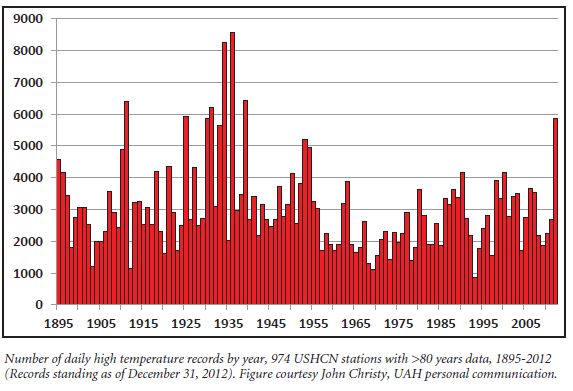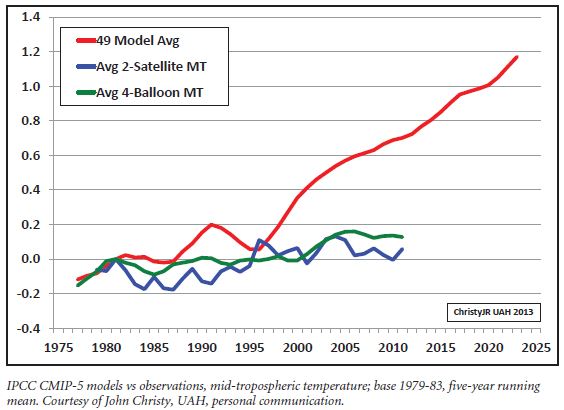Thought Piece
Not much has changed since Dr. Rusty Riese’s May 2014 Presentation in front of Houston Geological Society. The alarmists like Dr. Michael Mann are using the same old arguments, but after 3 more years, they seem even less fact-based. Frankly, I would love to have Dr. Mann do a 45 minute presentation about the facts and fictions of climate change October 2017. At least, I would hope that I would understand his scientific arguments better. Steve
2014 HGS Presentation: “Climate Change: Facts and Fictions”
Guest post by David Middleton
Dr. Rusty Riese’s May 2014 presentation to the Houston Geological Society…
Speaker: W.C. Rusty Riese
Adjunct Professor, Rice University
Climate Change: Facts and Fictions
The past several years have seen several opinion pieces regarding climate change appear in the pages of many publications, both scientific and secular. Although both sides of this now almost religious debate were represented, few if any real facts or data are provided to support the opinions expressed. The public deserves more, and specifically deserves to be properly informed.
The heat content of the atmosphere has remained largely unchanged since 1995. Data prepared and compiled by a number of climate scientists illustrate the wide divergence of climate model projections from what has been occurring: the climate has not been warming any more than would be expected as the world continues to move out of the Little Ice Age. These data have been accepted by the IPCC, whose chair admits that the climate modeling community does not understand what is happening.
Water vapor in the atmosphere is a more potent greenhouse gas than CO2. Climatologists have understood this for decades and this is a fact clearly expressed in all climatology textbooks. None of the climate models employed today adequately address the influence of water vapor.
Cosmic radiation is the source of the particles which cause water droplet nucleation and cloud formation in the upper atmosphere. Its flux, in turn, is directly influenced by solar activity and the strength of the resulting solar wind. None of the climate models deal with either of these first-order climate influences.

These facts allow a number of fictions to be addressed:
- Polar bears will not become extinct if sea ice diminishes. Polar bears were around before the Medieval Warm Period and came through it just fine. And a recently published, peer-review study of the Davis Straights in Canada found that not only had the polar bear population increased dramatically since the 1970s, but that the area may have reached its carrying capacity. Good news for polar bears.
- The evolution which the climate is exhibiting, and which it constantly exhibits, is not causing an increase in violent storms. The frequency of violent tornados (>F3) is similar.
- The changes in climate during the past 100 years have not caused either an increase in flooding or an increase in the number or extent of droughts.
- The number of daily record high temperatures is not at an all-time high. For the past 100 years that was reached in the 1930s during the Dust Bowl.
- Finally, there is not a consensus among scientists that anthropogenic CO2 is causing climate change. The widely quoted number of 97% of scientists believing in global warming is based on an on-line survey of 10,257 earth scientists. 3,146 replied and all but 77 were “disqualified” by the researchers conducting the survey. Of those, 75 thought that humans were contributing to climate change, thus the 97% number, one that is not particularly robust.
The conclusions to be drawn from examination of these data are four:
1. All of the scary global warming scenarios are based on computer models.
2. None of the models work.
3. There is and has been no scientific consensus.
4. The data which come from our global experiment, the observations we have made, indicate that the climate is evolving and always has evolved continuously, and people have had nothing to do with that change. We need to use this information to stop our regulators and legislators from taking steps and passing laws which will have no effect on the climate we enjoy and can only have disastrous impacts on our economy.
 Biographical Sketch:
Biographical Sketch:
Dr. W.C. Rusty Riese is a geoscientist based in Houston, Texas. He is widely experienced having worked in both minerals and petroleum as a geologist, geochemist, and manager during more than 40 years in industry. He participated in the National Petroleum Council evaluation of natural gas supply and demand for North America which was conducted at the request of the Secretary of Energy; in the more recent analysis of global supply and demand requested by the same agency; and in the National Research Council analysis of coalbed produced waters and their management in the western United States. He is currently a member of the American Association of Petroleum Geologists Committee on Resource Evaluations, and a member of the House of Delegates, and past Sections Vice President.
Rusty has written extensively and lectured on various topics in economic geology including biogeochemistry, isotope geochemistry, uranium ore deposits, sequence stratigraphy, and coalbed methane petroleum systems; and he holds numerous domestic and international patents. He has more than thirty years of teaching experience including twenty eight years at Rice University where he developed the curricula in petroleum geology and industry risk and economic evaluation, as well as several other courses. He is currently an Adjunct Professor at Rice University and the University of New Mexico. He is a fellow in the Geological Society of America and the Society of Economic Geologists; and a member of the American Association of Petroleum Geologists and several other professional organizations.
He earned his PhD from the University of New Mexico in 1980; his M.S. in geology from the same university in 1977; and his B.S. in geology from the New Mexico Institute of Mining and Technology in 1973. He is a Certified Professional Geologist, a Certified Petroleum Geologist, and is a Licensed and Registered Geologist in the states of Texas and South Carolina respectively.







